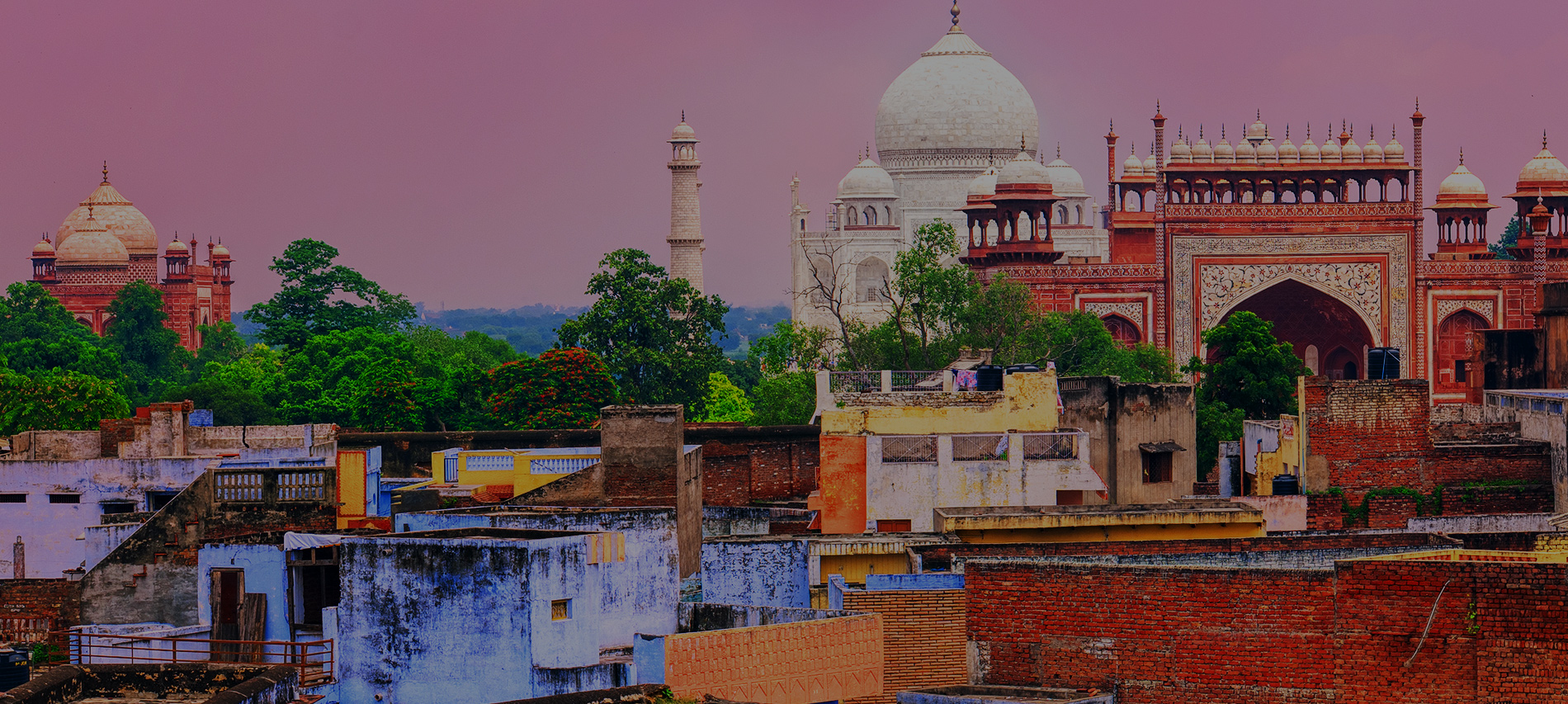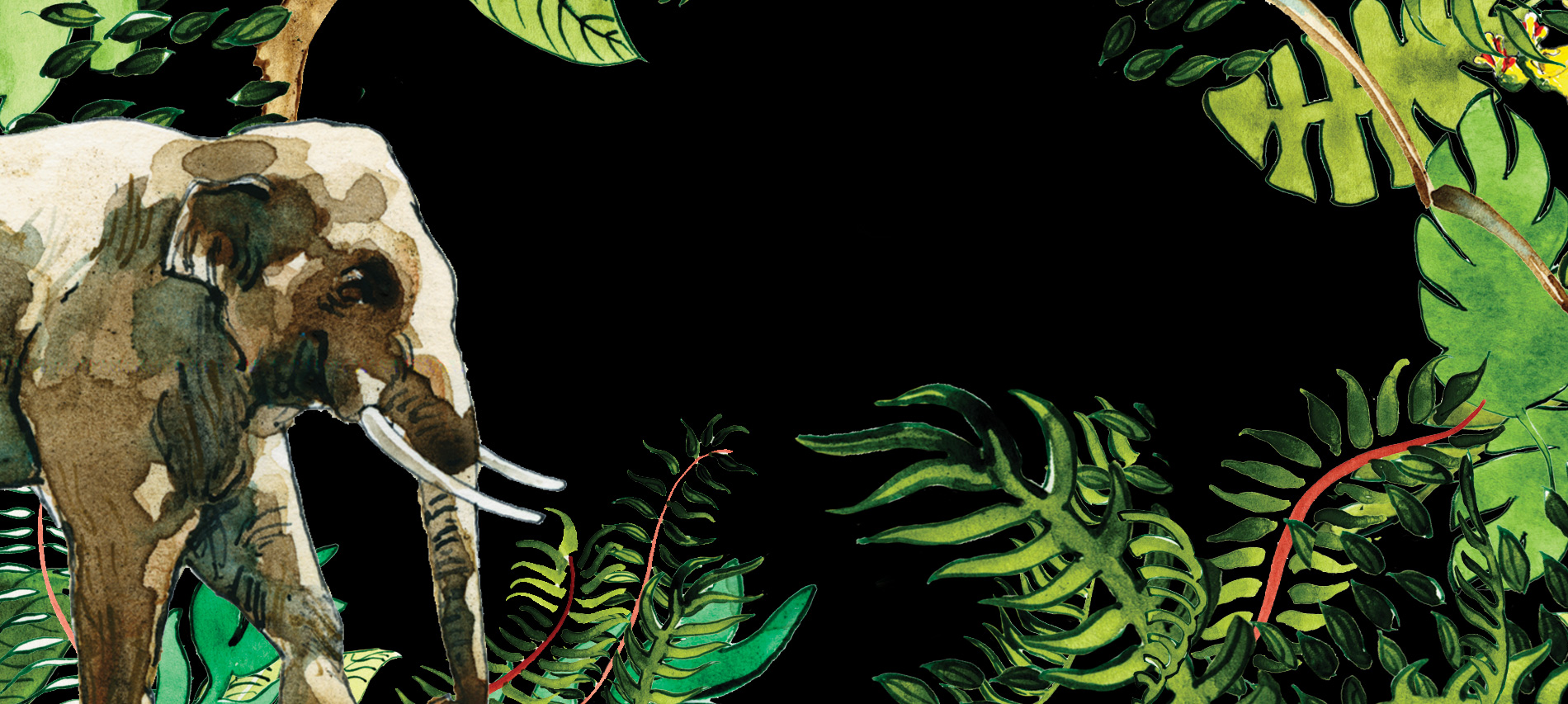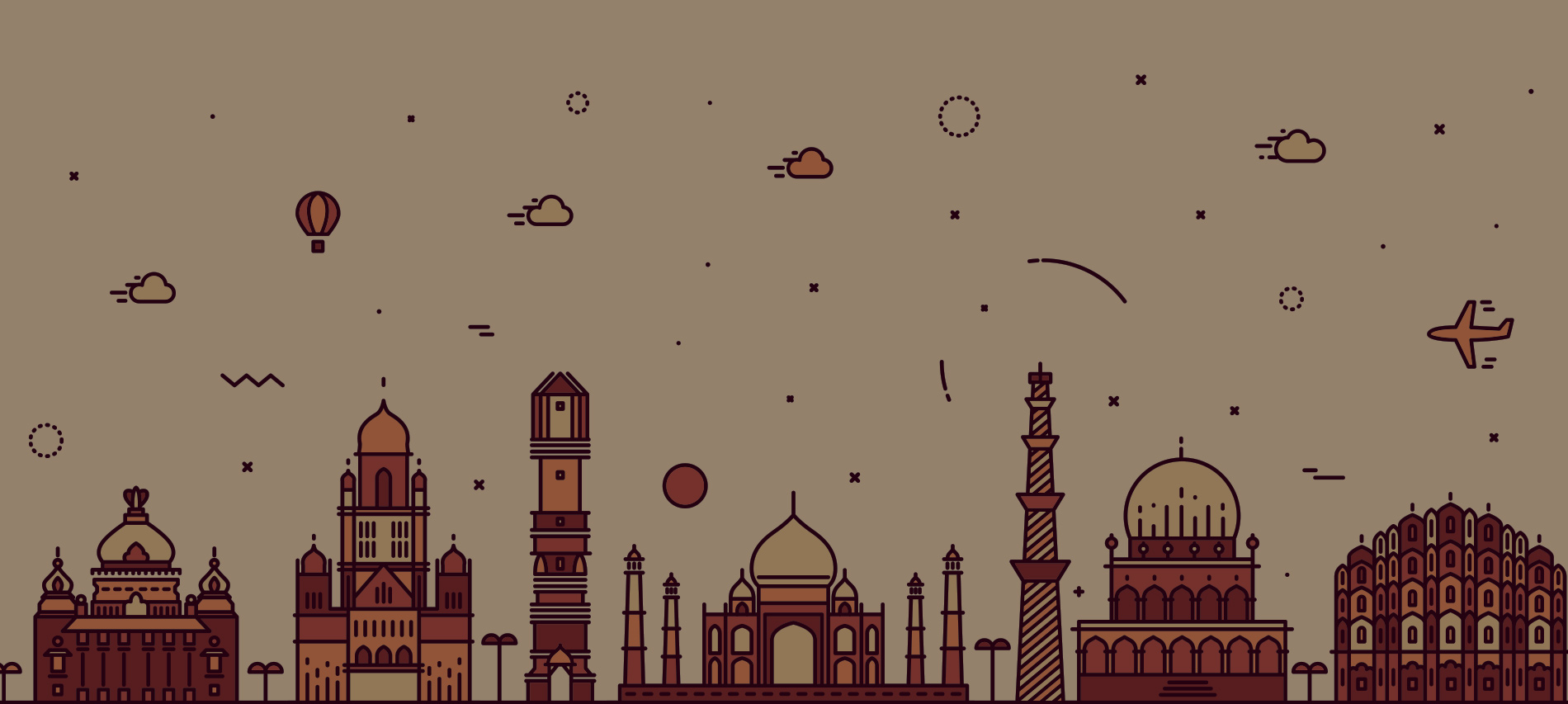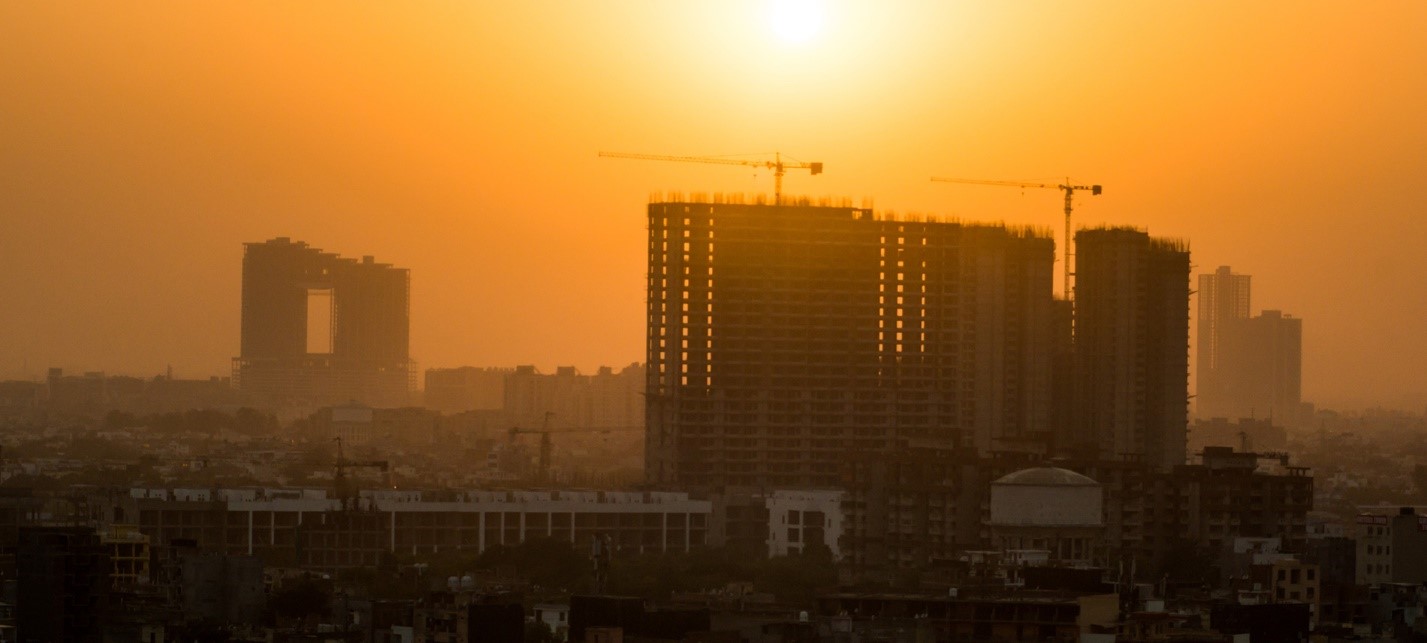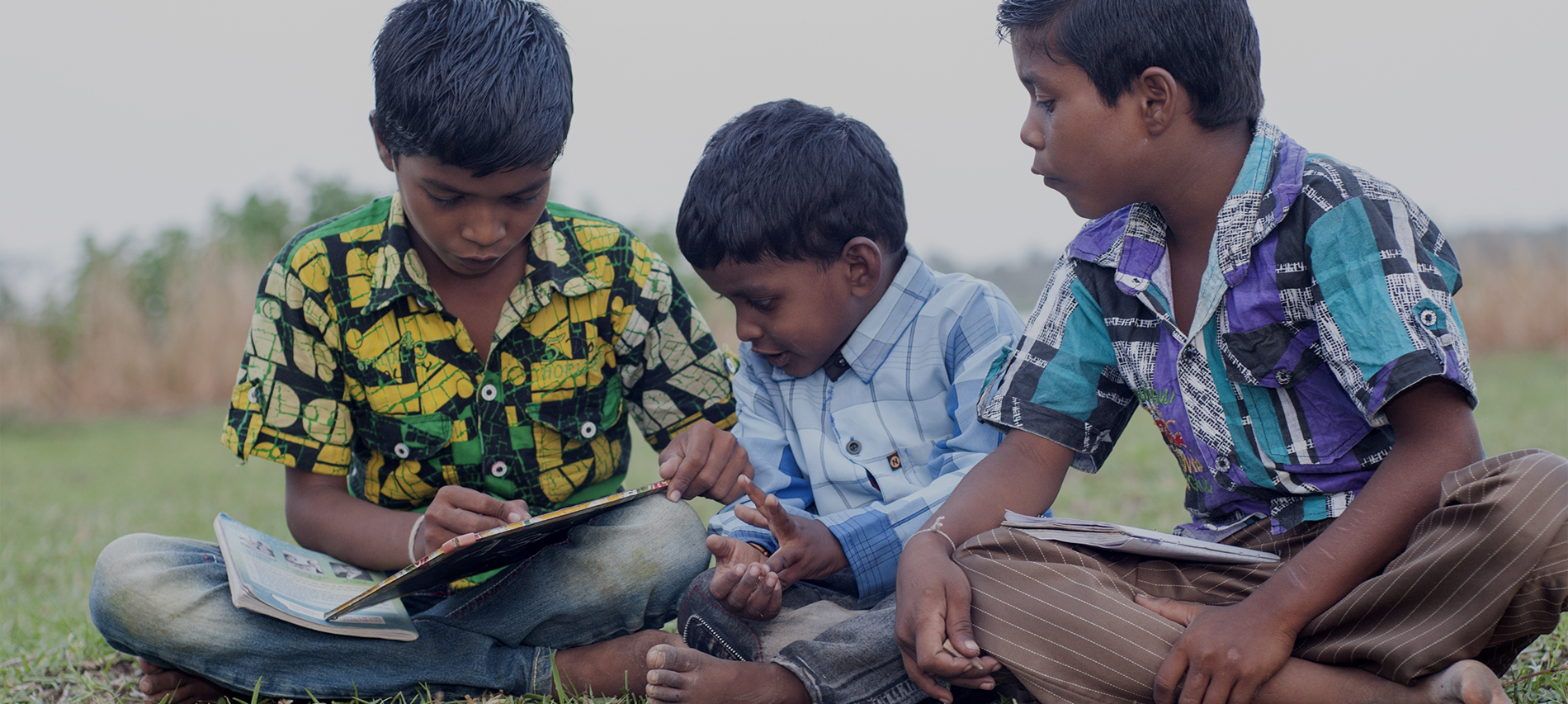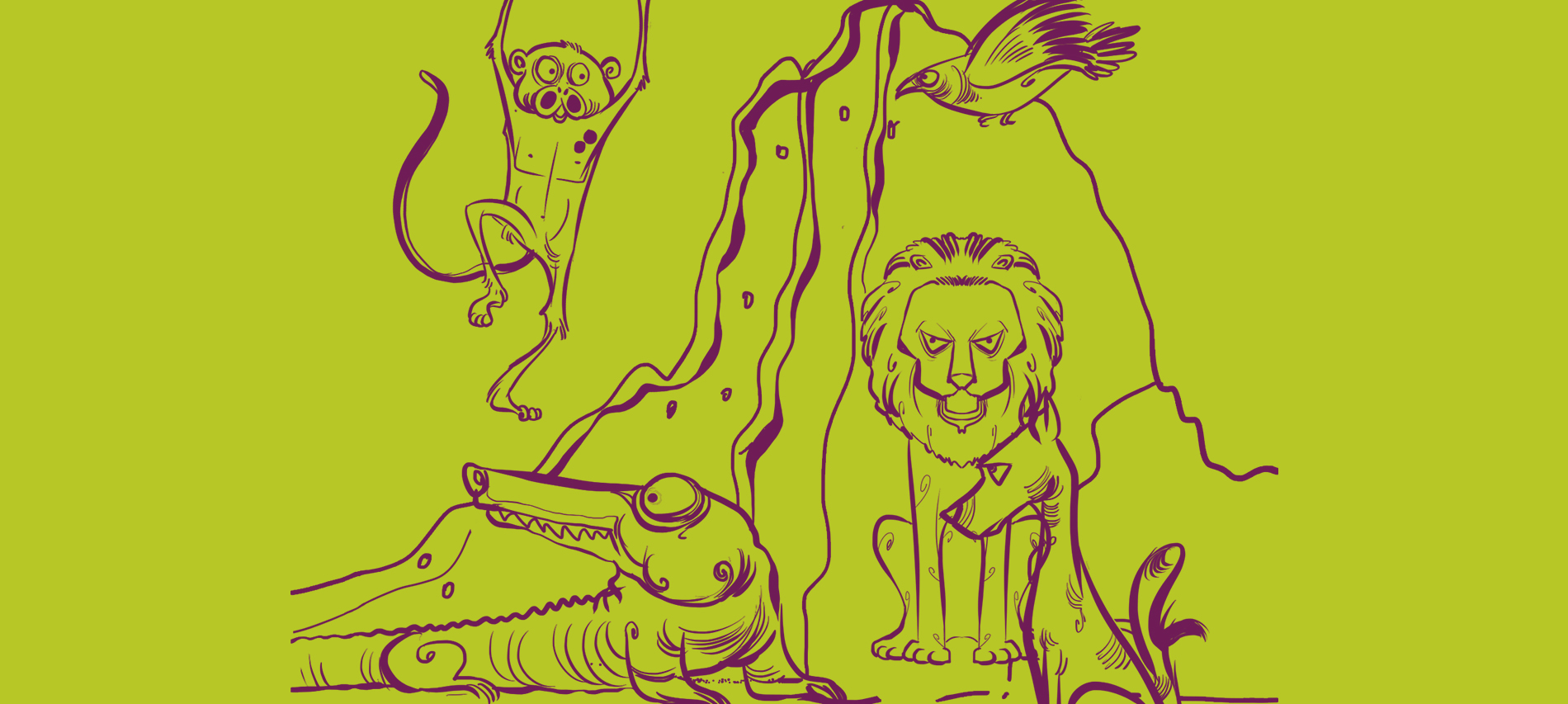Celebrated Tamil scholar and writer, Perumal Murugan, was born in a family of farmers.. Murugan’s Current Show and Seasons of the Palm, translated to English from the Tamil originals, are set against the backdrops of a city and a village respectively. Drawing from his personal experiences, the writer draws striking contrasts between life in a city and life in the countryside.
Here are 3 times Perumal Murugan showed us how cities and villages are nothing but the two sides of the same coin.
When he showed us how different the experience of going to the theatre is in a city and a village.


When he showed us how shops in a city were not the same as shops in a village.


When his stories showed us the contrast in how the divine is evoked in the inhabitants of a city and a village.


As Murugan takes us through the concrete jungles of the city and the dusty lanes of the village, tell us how you’ve experience the rural and urban differently.
Tag: india
When a Bomb Rocked the Wafi Mall in Dubai — An Excerpt from 'In the Name of God'
What happens when you have to choose between faith and logic? Temples are places of worship, oceans of tranquility, or so everyone thinks, till a series of murders threatens to destroy the carefully cultivated reputation of the royal family of Thiruvanathapuram.
In Ravi Subramanian’s latest novel, we follow Kabir Khan, Additional Director, CBI, as he breezes through a complex maze of fact and fiction, faith and deceit, religion and commerce to unravel the mystery and unmask the killers with only minutes left at his disposal. Slick, riveting and fast paced, In the Name of God is a truly gripping novel.
Here’s an exclusive excerpt from the book.
It was a deafening sound. The kind that is heard when metal crashes into glass, bringing the whole thing down. The ground shook. It almost felt like an earthquake.
Visitors at Wafi Mall, the largest and possibly most exquisitely designed luxury mall in the area, stood astounded. No one could fathom what was going on.
Gate 1 of the mall was to the right of the central courtyard and a few minutes away from the main parking lot. The ground floor, accessible from Gate 1, was home to a variety of luxury gold and jewellery and accessory brands—Chopard, Cartier, Damas, Rolex, Omega, Breitling and a few local biggies were within shouting distance from the gate.
Moments later another piece of glass came crashing down amid the perceptible sound of cars rumbling close by.
At precisely forty-eight minutes past noon—no one knew the significance of the time, if there was one—two Audi A6s, one black and one white, had driven up to Gate 1. It was not uncommon for cars to drive up to the mall entrance. It was some distance from the main parking and the mall clientele, the rich and famous of Dubai, were not used to walking with their shopping bags. Ordinarily, the cars stopped on the carriageway built for them, waited for a couple of minutes, picked up their masters and drove out. But at 12.48 that day, the two Audis did not stop at the main gate. However, that was only half as strange as the manner in which they drove up to the gate: The black Audi was furiously approaching in reverse, followed closely by the white one, their bonnets almost kissing each other.
By the time the lone security guard at the gate could react, the black Audi had already crashed through the glass-and-metal door with a deafening noise. It drove further into the mall, right up to the main lobby on the ground floor, and screeched to a halt, the white car following suit. It almost seemed as if the black Audi was the pilot car, clearing the way for the second car. But why was it being driven in reverse? No one knew. No one cared. All that anyone in the mall was worried about was saving his or her own life. What ensued was mass panic as scared shoppers started running helter-skelter.
Amidst the confusion, four masked men, all dressed in black, got out of the cars, while the drivers stayed back, keeping the engines running. Armed with Kalashnikovs, they fired indiscriminately in the air, sending the already panic-stricken crowd into a state of hysteria. Everyone assumed it was a terrorist attack. At the time, that’s what it seemed like. Nervously vigilant, the four men strode towards the aisle to the right of the entrance. It was narrow, short and housed only three shops: Cartier, D’Damas and Ajmal Jewellers. At any given point in time, the cumulative stock in all the three stores put together was worth over a hundred million dollars.
The leader of the group stopped in front of Ajmal Jewellers and gestured to the other three to take up their positions. It took just one bullet to neutralize the shop attendant who was furiously rolling down the safety grille. The men entered the store. Once they were in, they were cut off from the rest of the mall.
All anyone could hear was the sound of shattering glass and indiscriminate gunfire. In three minutes the men came out of the store and ran back to the two Audis. Each of them had a bag in one hand— clearly booty from Ajmal Jewellers. But as they were rushing, the last of the four tripped and fell. The bag slipped out of his hands and rolled ahead. The contents of the bag—jewellery and gemstones—spilled out on to the marble floor. ‘Damn!’ the leader swore. ‘Quick! Three more minutes and the cops will be here. We need to go!’ The fall had delayed them by forty-five seconds. They had to leave, else they would be sitting ducks for the Dubai Police. He continued towards the Audi even as his fallen team member recovered, and tried to gather the loot on the floor and put it back into the bag. He quickly got into the second Audi though he had not managed to collect everything that had fallen out of the bag.
Immediately the engines roared to life. The cars vroomed and this time, the white Audi reversed out of the shattered mall entrance followed closely by the black one. In no time, they had disappeared from sight.
The moment the cars left the mall, people rushed towards the jewellery showroom, a few stopping on the way to pick up the pieces of jewellery and curios that had fallen out of the robber’s bag.
Ajmal Jewellers was in shambles. Glass from broken windows and display units was strewn all over. There was blood everywhere. Seven people had been shot—six store staff and a sole shopper.
All of them were dead.
This is an excerpt from Ravi Subramanian’s ‘In the Name of God’.

5 Things Which Give you a Glimpse of Ecological Reality of India
Prerna Singh Bindra is one of India’s leading wildlife conservationist and writer. In her latest book, The Vanishing, she ponders on the crisis that the flora and fauna of India are facing today. She also asks some pertinent questions such as “Is development inimical to ecological security?” Furthermore, she talks about the steps India has taken towards safeguarding its forests and wildlife.
Here are 5 realities which give an insight into the current status of ecology in India.
Many times, environment sacrifices its elements to make way for development.

India despite a 1.3 billion population, harbours over 60 per cent of the world’s remaining wild tigers.

All contained in just over two per cent of the global land mass.

India’s increasingly battered forests still harbour secrets—and species we thought had vanished, or did not even know existed.

India’s people are remarkably accepting of predators in their midst.

Did the facts leave you appalled? Tell us what are you doing to save the environment.

4 Books by Gita Mehta that Give You a Glimpse of the Real India
Writer Gita Mehta, born in Delhi but straddling her world between New York, London and the Indian capital writes four fascinating tales of India, going beyond the textbook definition of how we know it. Drawing largely from personal experiences and observations made not just from within the country, but as an outsider too, Mehta spins a masterful yarn of myths, legends, mysteries and shocking truths. Refreshingly irreverent, brilliantly candid, her four stories give a different slice each of the country we can only ever dream of knowing completely.
A River Sutra

Denouncing a life of unimaginable riches, a retired bureaucrat settles on the banks of river Narmada in search of solitude and peace. But little did he know that the mysteries of a young lover, an ascetic and a lovelorn woman were about to rock his boat as they unravelled on the banks of the holy waters.
Raj

Standing at the brink of a loveless marriage, motherhood and a freedom struggle that threatens her sovereignty, Raj is the journey of a royal Indian princess in the late nineteenth century – a journey taken through not only her soul, but also through her life’s biggest reality crumbling in front of her eyes.
Karma Cola

The mystical east, at the heart of which lies India, is the land of tigers and snake charmers, mysteries and the divine. It is where the West descends in search of spiritual answers. Amidst this heady cocktail, Gita Mehta busts a myth or two in her novel Karma Cola. From The Beatles to the stars of Hollywood who came to India on their spiritual quests, the novel sets off on a trail of half magic, mortal gurus and some ugly and bitter truths.
Snakes and Ladders

A land of paradoxes, India is a canvas of fascinating opposites that seamlessly blend to form the regular, the every day. From continuing to nurture the centuries-old caste system to fuelling the birth of the world’s largest cinema industry after Hollywood, Snakes and Ladders is an unapologetic zoom-in to an India at its most honest, most shocking.
Which story did you think comes closest to your idea of India?
5 Things to be Hopeful for as an Indian
Anirudh Krishna in The Broken Ladder reveals the untapped talent, which if honed, can propel India in the league of developed nations. Additionally, Krishna also highlights instances where India has shown significant improvement.
Here are five examples that make one hopeful that the day isn’t far when India will become a global superpower:
Share of women entrants in business schools is substantially larger than what it used to be a generation earlier.

Glimmers of hope among the marginalized communities

An attempt to bridge the gap in terms of educational institutions

A commendable achievement for the nation since achieving independence

An improvement in the participation of people in decision-making process

Tell us the improvements you have seen in your part of the country in the last decade.
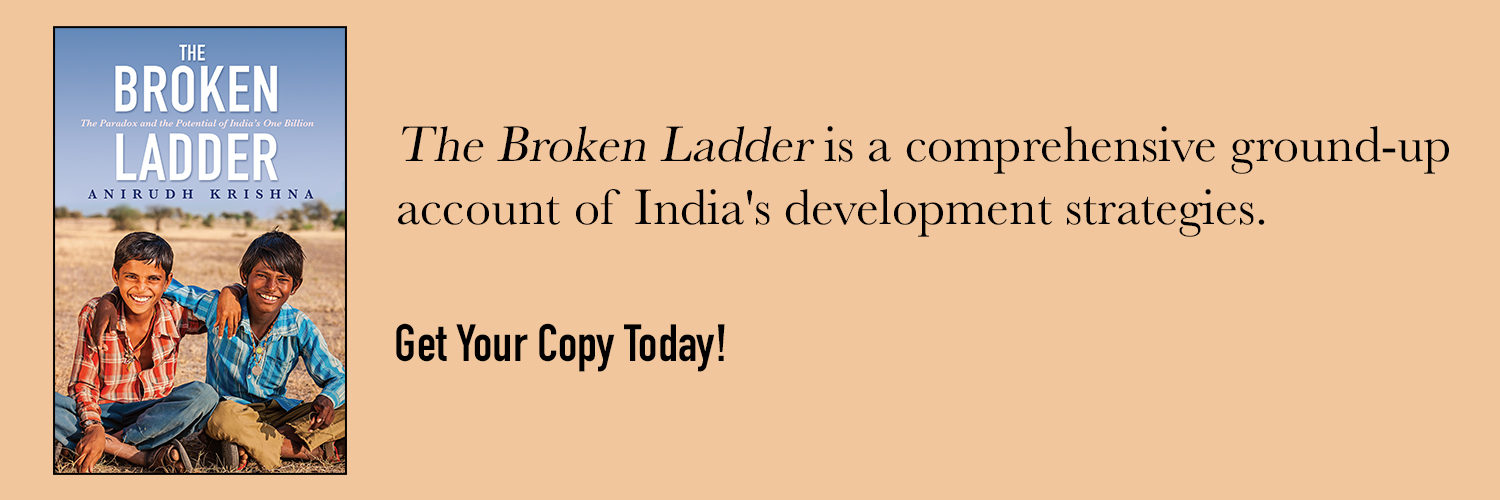
The Missed Opportunities in India’s Development
Anirudh Krishna in ‘The Broken Ladder’ presents a ground-up view of India’s development strategies by delving into common people’s lives. He also ponders on questions like despite being an economic force why are so many Indians living under the poverty line. Through stories of individuals, Krishna reveals the heartbreaking and eye-opening details of missed opportunities and untapped talent that India houses.
Here are a few stories that show the inequality of opportunities in the country:
Children who grow up in poor neighbourhoods suffer from an acute lack of knowledge about the range of career pathways.

With a rare few exceptions, people growing up in villages have not made it big in terms of professional achievements.

In India, for many people like Keshu, the ladders leading upward are broken.

Jaitram and Gopal lead a harsher lifestyle in comparison to their family members who live in the city.

Due to lack of good institutions many students feel that their aim in unassailable.

Growth in the country has not been directly and proportionately experienced by every individual. Tell us how can India better improve the prospects for people like Keshu while simultaneously growing its globally-influential economy?

6 Quotes by Amit Chaudhuri that Showcase His Brilliance
The author of six novels, his first major work of non-fiction, Calcutta: Two Years in the City, was published in the UK and India in 2013. His first novel, A Strange and Sublime Address, is included in Colm Toibin and Carmen Callil’s Two Hundred Best Novels of the Last Fifty Years.
Here are 6 quotes by Amit Chaudhuri that’ll enrich every reader’s life.
On the nature of history.

A poet’s view on love.

On the bottomless depths of a woman’s heart.

How class division changes perceptions.

His views on writing.

On a feeling many share.

Amit Chaudhuri’s latest – Friend of my Youth is, like all his previous works, a treasure trove of beautiful moments and glorious quotes that’ll leave you breathless.

Decoding the Panchatantra: 6 Little-Known Facts About the Evergreen Animal Fables
Originally composed in Sanskrit, the Panchatantra is one of the oldest collections of fables in the world. Devised for the purposes of teaching three dull-witted sons of a king, it strives to convey the principles of kingship and some valuable life lessons.
Nilanjana Roy, author and journalist, notes in her introduction to the refreshing new translation of the Panchatantra: “Stories are alive and they like to travel.” In fact, the more brilliant the stories the wider their reach. And therein lies the magic of the Panchatantra – it has hopped down and affected numerous centuries and generations!
Here are six little-known yet brilliant facts about the Panchatantra!
Who wrote the Panchatantra? Vishnusharma was renowned far and wide for his learning and his skill as a teacher, and was therefore given the task of educating the sons of the king and making them fit to rule. He was eighty years old at the time yet accepted the challenge, and devised the stories of the Panchatantra to teach the princes the rules of kingship and the principles of government.
Vishnusharma was renowned far and wide for his learning and his skill as a teacher, and was therefore given the task of educating the sons of the king and making them fit to rule. He was eighty years old at the time yet accepted the challenge, and devised the stories of the Panchatantra to teach the princes the rules of kingship and the principles of government.
When was the Panchatantra composed? The exact date of its composition is uncertain. We do know, however, that it was translated into Pahlavi in 550 CE. Thus, we know with certainty that the Panchatantra must have been composed before this date.
The exact date of its composition is uncertain. We do know, however, that it was translated into Pahlavi in 550 CE. Thus, we know with certainty that the Panchatantra must have been composed before this date.
Where was the Panchatantra composed? We do not know the exact location of this city, or even if it was a real place. The Panchatantra only states, rather vaguely, that Mahilaropya was the capital city of ‘a kingdom in the south’.
We do not know the exact location of this city, or even if it was a real place. The Panchatantra only states, rather vaguely, that Mahilaropya was the capital city of ‘a kingdom in the south’.
The Structure of the Panchatantra The original Panchatantra is a mixture of verse and prose. The stories are narrated mainly in prose, but the lessons derived from the tales are usually given in verse form. Panchatantra takes its audience into a series of stories, deeper and deeper, from one level to the next.
The original Panchatantra is a mixture of verse and prose. The stories are narrated mainly in prose, but the lessons derived from the tales are usually given in verse form. Panchatantra takes its audience into a series of stories, deeper and deeper, from one level to the next.
Characters in the Panchatantra The author has used a device to make it easy for his audience to understand the nature of his characters, and that is their names. He has given his characters, whether human or animal, names that highlight certain aspects of their appearance or behaviour. Thus, we have Pingalaka the lion, whose name means ‘one who is red–gold’, named for his fiery coat!
The author has used a device to make it easy for his audience to understand the nature of his characters, and that is their names. He has given his characters, whether human or animal, names that highlight certain aspects of their appearance or behaviour. Thus, we have Pingalaka the lion, whose name means ‘one who is red–gold’, named for his fiery coat!
Translations and Retellings The subject matter of the Panchatantra and its delightful tales made it a very popular text. Its stories, carried far and wide by travellers and merchants, spread rapidly across the world.
The subject matter of the Panchatantra and its delightful tales made it a very popular text. Its stories, carried far and wide by travellers and merchants, spread rapidly across the world.
Want to soak in the magic of the Panchatantra? Relive the joy of this enduring classic, translated brilliantly from the original by Rohini Chowdhury and now in a classic keepsake edition – here!
5 Things You Didn’t Know About Mohammad Ali Jinnah
Mohammad Ali Jinnah is well known as a world leader who rose during the freedom struggle against British colonization. Personally, he was often described as stern or cold and singularly obsessed with his political ambitions, however , there are many unknown facets to him.
Sheela Reddy uncovers some of these in her new book, Mr and Mrs Jinnah:





Sheela Reddy in her exhaustive account, chronicles the unknown facets of the man known as Mohammad Ali Jinnah. Get your copy here.
6 Sessions to Look Out for at JLF ’17
It’s that time of the year!
10 years since the first JLF, the Festival has grown into the world’s largest free event of its kind. Having hosted 1300 speakers and welcomed nearly 1.2 million book lovers, its success has been astonishing and heartwarming.
Some of the biggest Penguin authors have rocked the stage at JLF and this year promises to be even better. From commercial superstars to critical bigwigs, this year we are getting the crème de la crème from our author roster.
Here are a few of the sessions you’ll not want to miss at the Festival.
Gulzar
Gulzar and Pavan K. Varma in conversation

People usually run out of superlatives when talking about the evergreen Gulzar. One of the greatest artists to ever grace the JLF, Gulzar Sahib’s session, along with Pavan K. Varma, will be on his latest work – Suspected Poems. You’ll not want to miss his musings on poetry, literature and the state of the world.
Tabish Khair
Manju Kapur and Tabish Khair in conversation with Ashok Ferrey

Currently teaching English at Aarhus University in Denmark, Tabish Khair was born and educated in Bihar. At the session, the former journalist will be talking to Ashok Ferrey about the context and inspiration for his works. He will also talk about his book Jihadi Jane, a powerful novel about two Muslim girls who decide to join ISIS.
You can also catch him at the Festival along with Saeed Naqvi, Qaisra Shahraz, Sadia Dehlvi and Ornit Shani as they talk of the conflicts and polarities of being an Indian Muslim in an increasingly divided world.
Ashok Ferrey
Ashok Ferrey, Kyoko Yoshida and Marina Perezagua in conversation with Sunil Sethi

Ashok Ferrey will be in conversation with Sunil Sethi on the pursuit of fiction that involves a leap of faith between material and literary reality. He will be joined by other notable contemporary writers as they also discuss how writers enter and access fictional journey. The bestselling Sri Lankan author will also explore the devil within as he discusses his latest book The Ceaseless Chatter of Demons.
From talking about the thin red line between a person’s beliefs and politics with Tabish Khair to joining Ashwin Sanghi on his talk about the art of writing thrillers, Ashok Ferrey will also be at various other sessions with other authors.
Ravinder Singh
Ira Trivedi and Ravinder Singh in conversation with Lucy Beresford
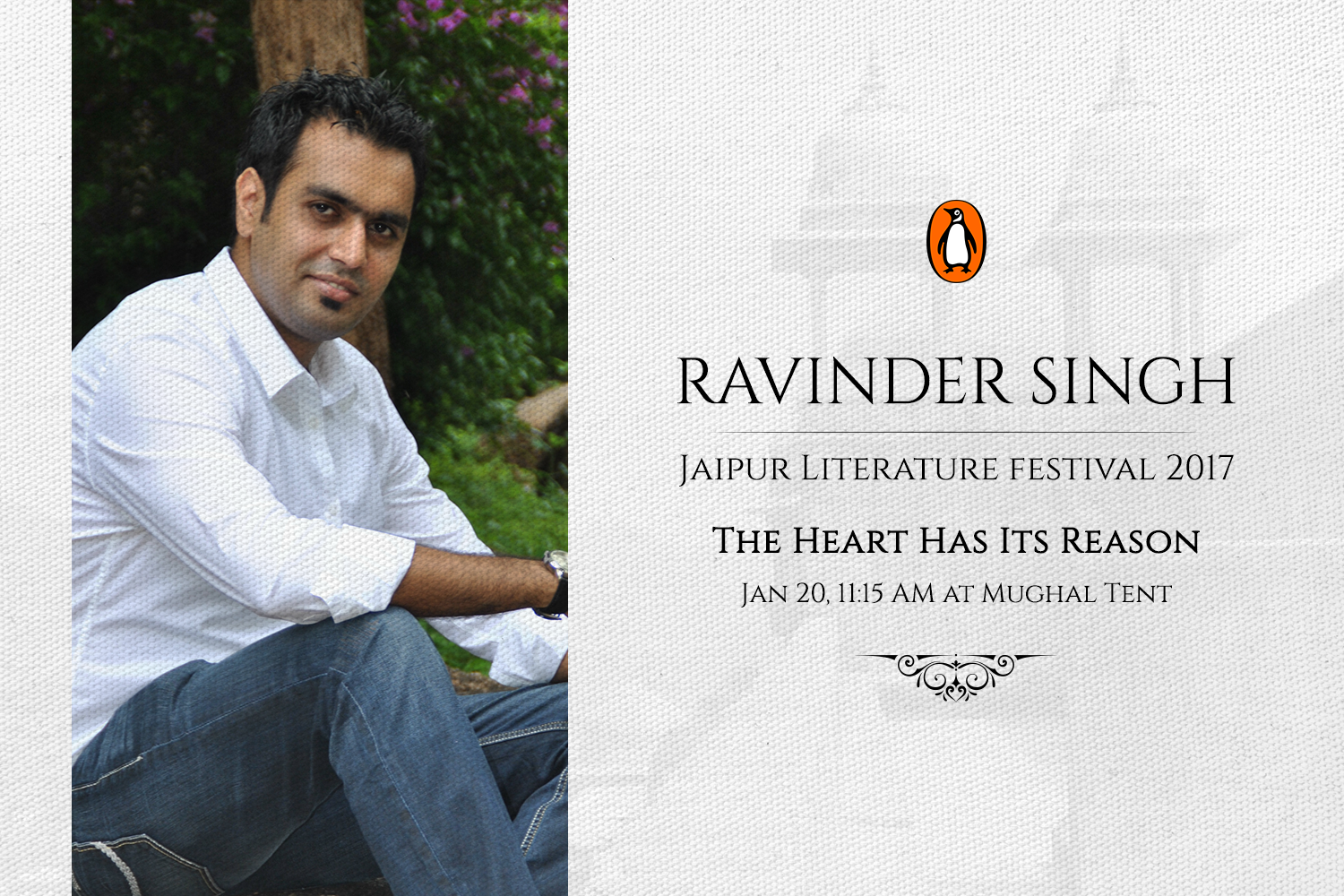
Romantic fiction reaches out across time and history to every successive generation with tales of love. The King of Romance, Ravinder Singh’s session is about love in contemporary India. The author who is known for writing from the heart, about the heart will speak about the psychology and the changing mores of love in our times.
Devdutt Pattanaik
Devdutt Pattanaik introduced by Amrita Tripathi

Ancient Greece and India have both bequeathed a lasting body of myth to the world. In his latest work Olympus, Devdutt Pattanaik attempts to understand how an Indian reader raised on a steady diet of local myths and legends might respond to classical Greek mythology. By reversing the gaze, he explores the fascinating connections between these stories and sagas. At the Festival, Pattanaik will talk about both the mythologies and their lasting legacy.
Devdutt Pattanaik will have two more sessions at JLF – on the history and legacy of the Vedas and on his book The Girl Who Chose.
Arshia Sattar
Arshia Sattar and Volga in conversation with Vayu Naidu

A symbol of chastity and loyalty, the goddess Sita has evolved into a feminist icon for her silent strength and endurance. In her session, Arshia Sattar will talk about her highly acclaimed translation of the ‘Uttara Kanda’. She will talk about the sacrifice, choice and the complex moral universe of the Ramayana.
Arshia Sattar will also be in various other sessions at the Festival discussing atheism in the ancient world to understanding the brilliant A.K. Ramanujan.
———
The themes of equity and democracy run through the Festival’s veins bringing humanitarians, historians, politicians, business leaders, sports people and entertainers together on stage. Access to these renowned thinkers along with some of the finest writers in the world provides a potentially life-changing opportunity to visitors.
We hope to see you at Jaipur!
—————–







